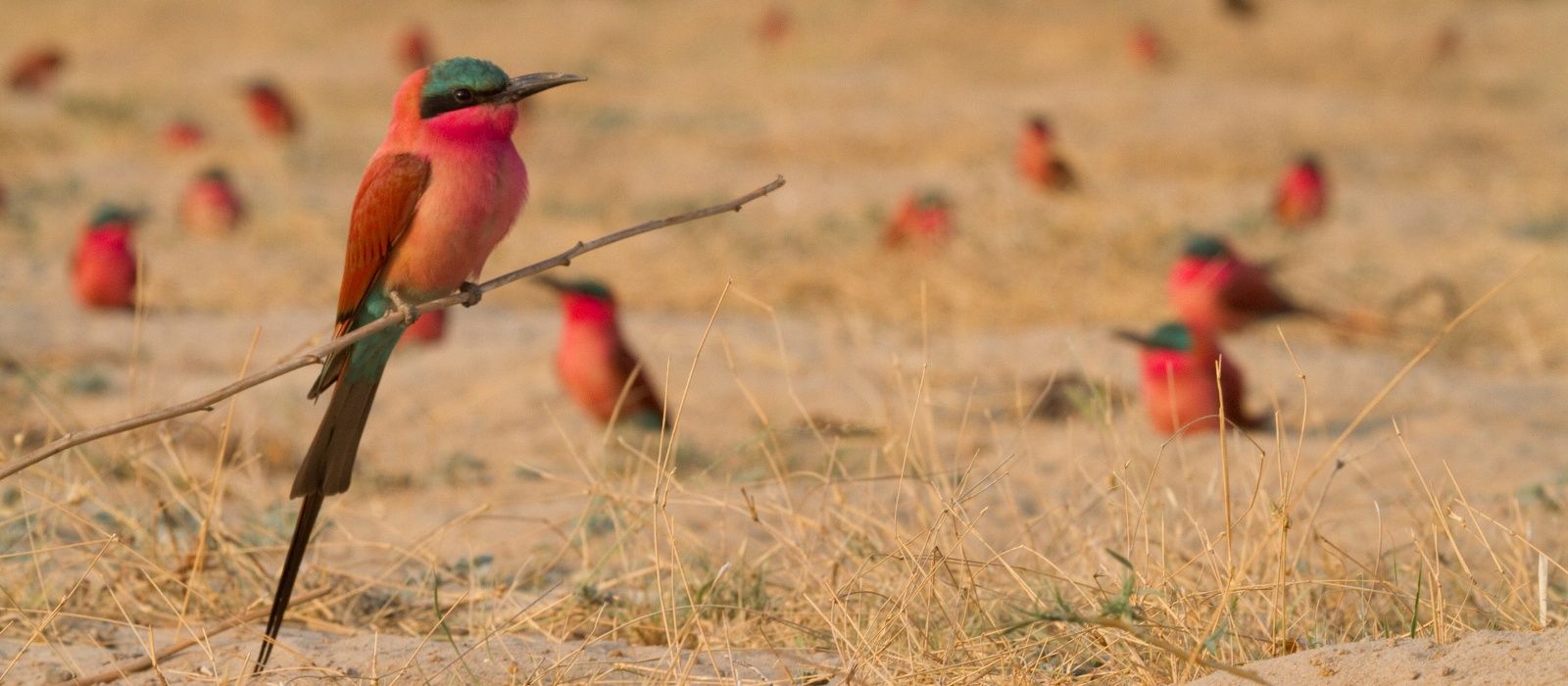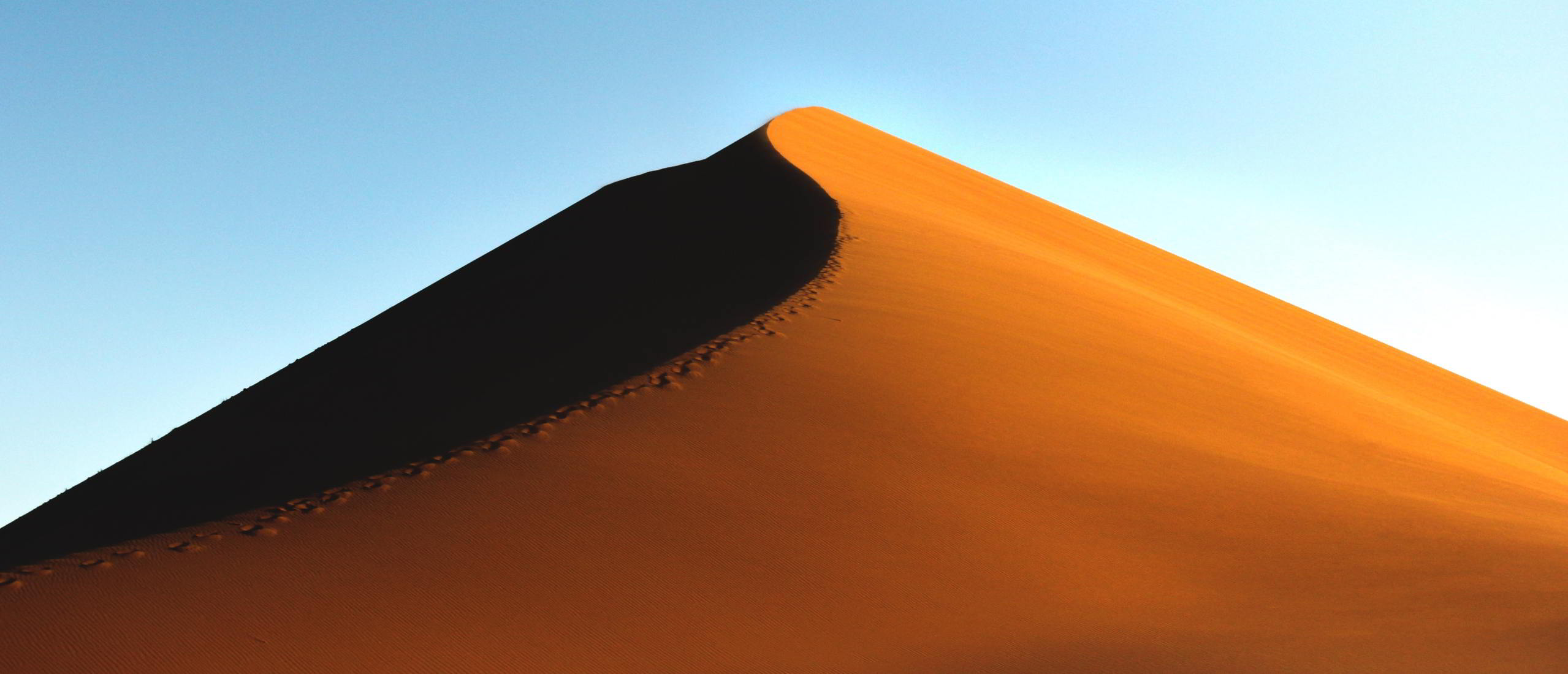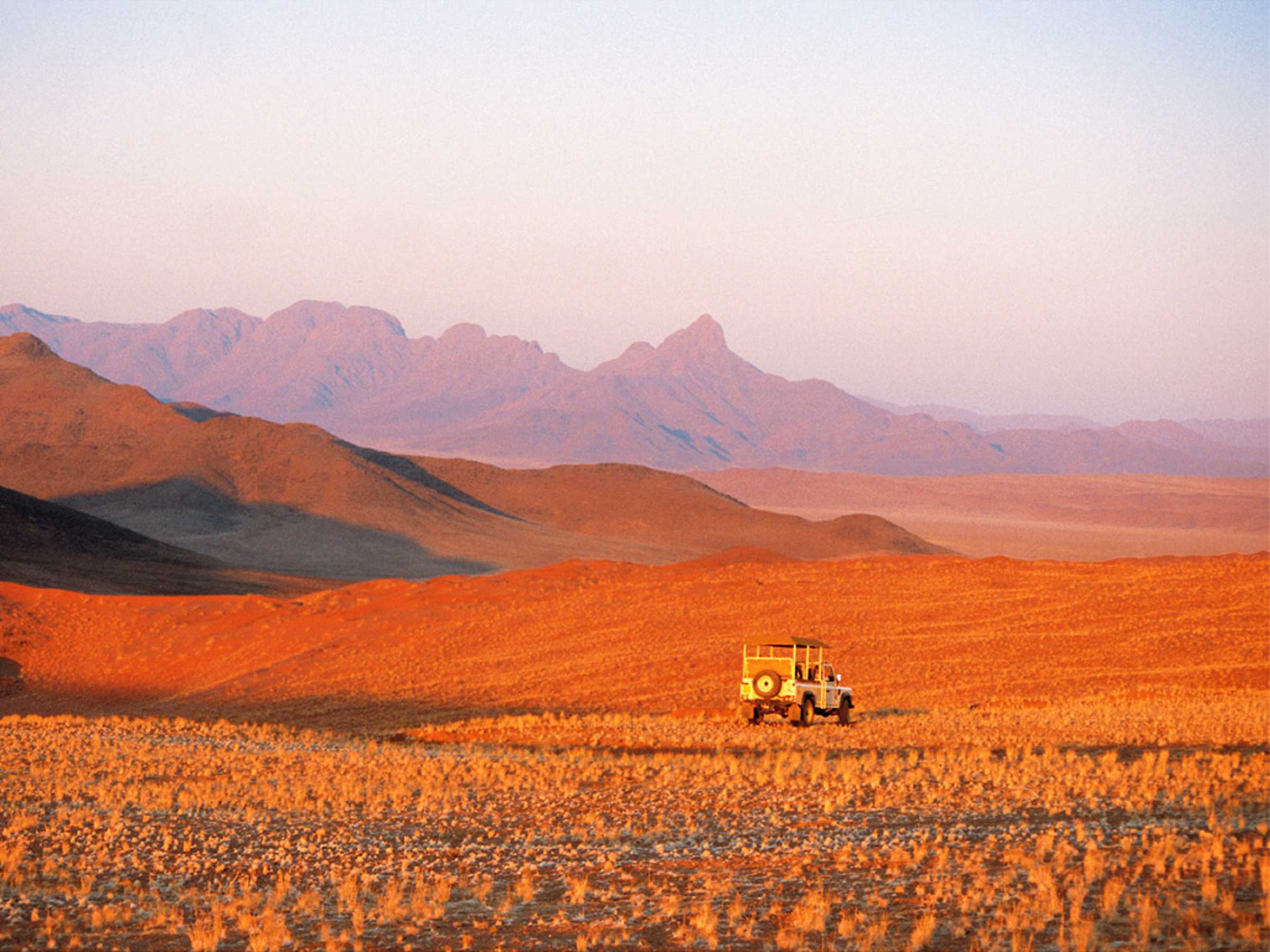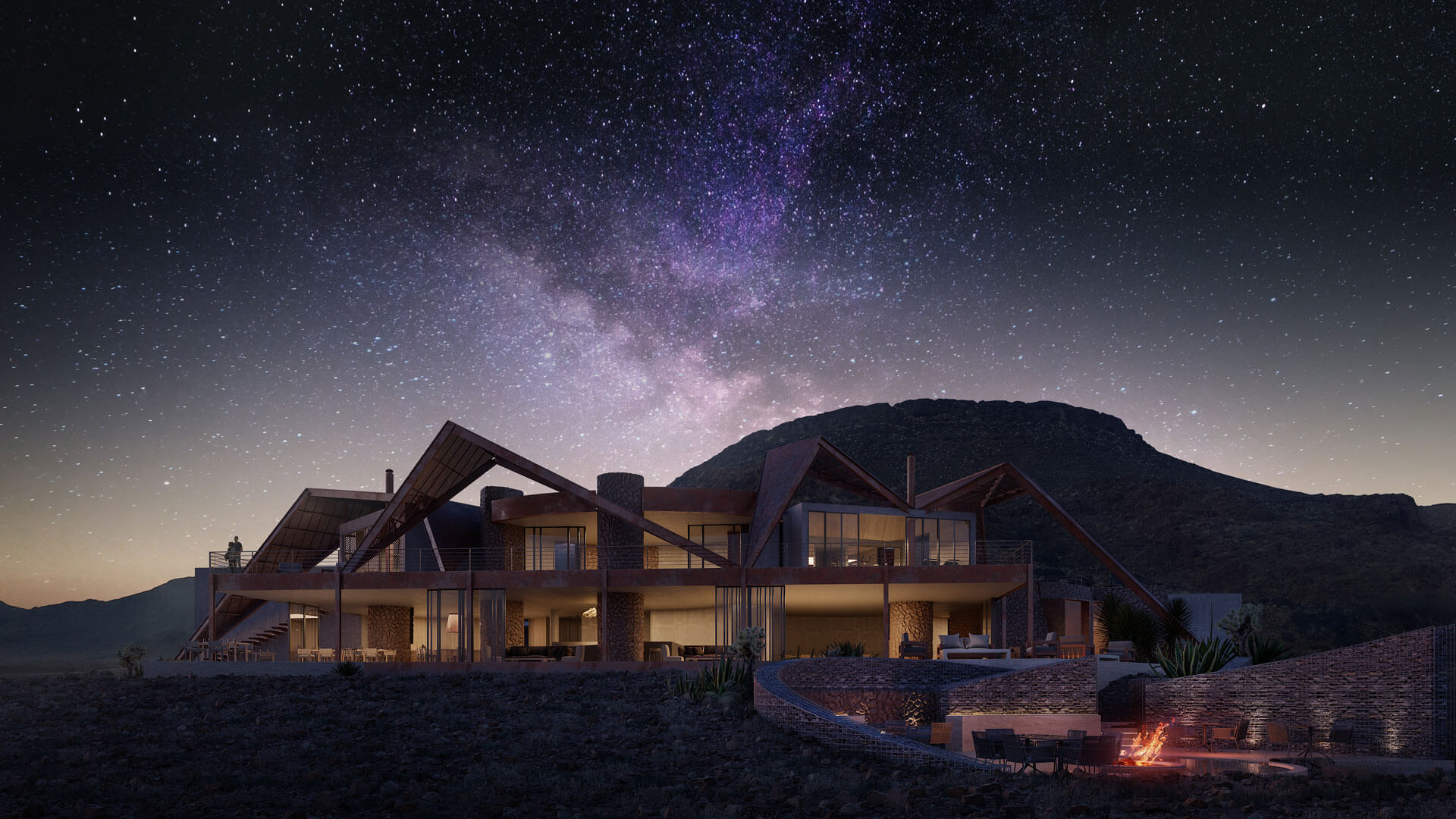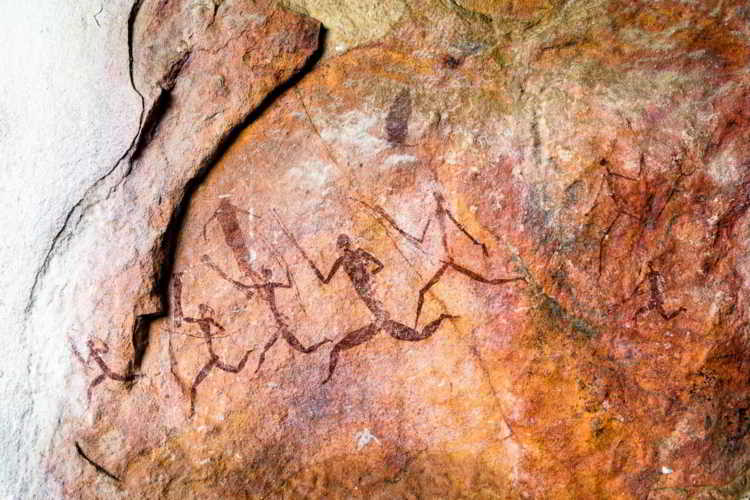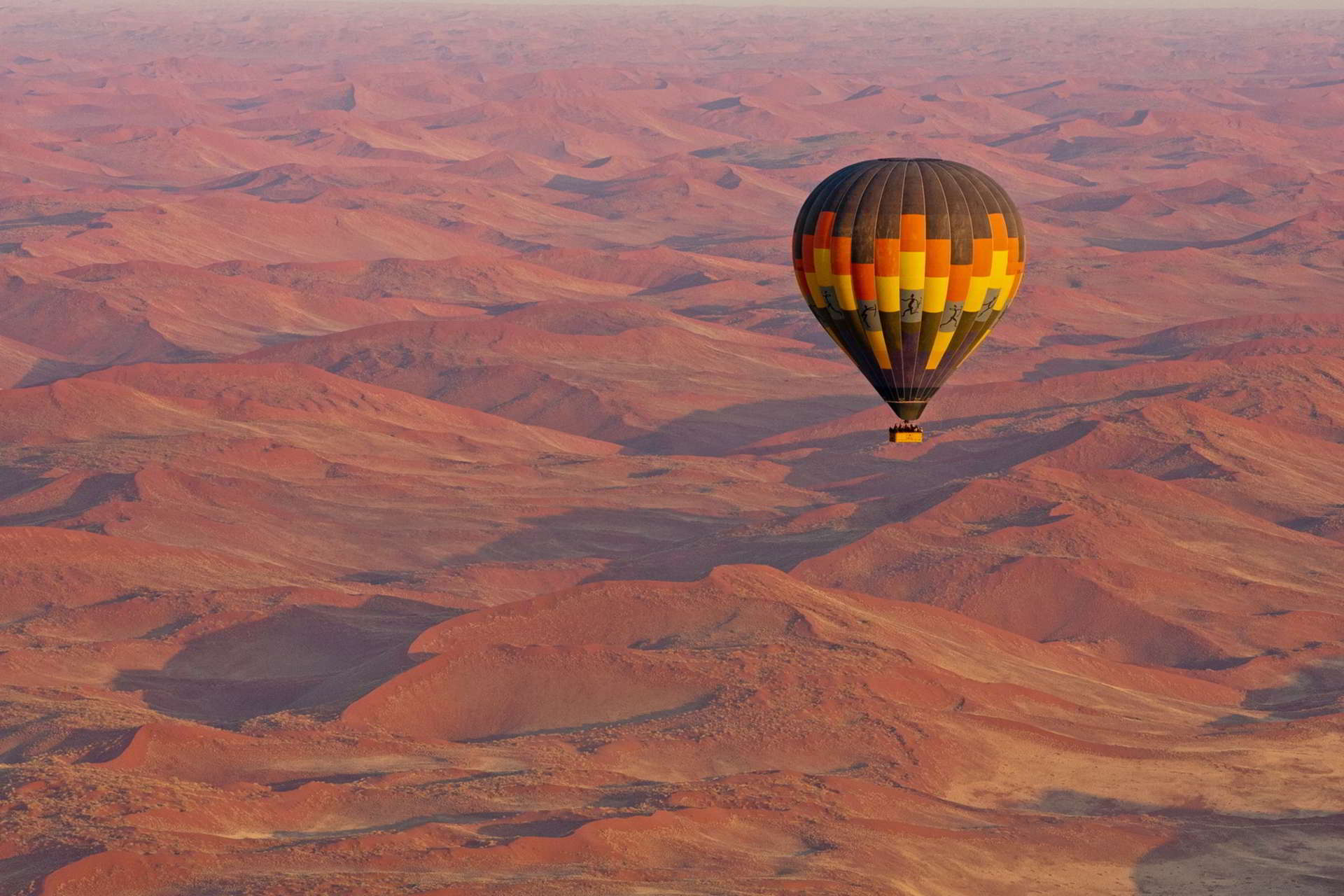
Traveling around Namibia
One of the prime travel destinations in Africa and is known for ecotourism which features Namibia’s extensive wildlife, rugged arid landscapes and fascinating local culture.
Highlights of Namibia
Overview of Namibia
Namibia is a country that is claimed by the vast limitless vistas of nature, bathed in the heat of the African sun and overflowing with the splendour of an untouched wilderness. Visit Windhoek, the country’s capital city and enter the gateway to all things Namibia.
Home to the world’s oldest desert, its landscape it inundated by the presence of mighty ridges that curvaceously rise to form some of the world’s most majestic shaped dunes and heights peaks. Essentially an enormous sea of sand, the Namib Desert embodies the isolation, solitude and tranquillity of a barren wilderness.
The European influenced town of Swakopmund is where desert dunes slope down to mean ocean waves It is here where you will discover the bohemian flair of sidewalk cafes, its resort-like appeal resonating from the seaside promenade and the historical grace of German architecture that lines the streets.
Make your way to the eerie region of Skeleton Coast that spans almost 500km along the western edge of Namibia. Experience the coastal graveyard of shipwrecks and bleached whale and seal bones that litter the shores. Experience culture and journey to Kaokoland, where you will meet the statuesque Himba tribe covered in the copper tones of red ochre and animal fat.
Damaraland’s vast panoramic plains are an inspiration to all that visit its land, a distinctive wildness where time dissolves and nature reigns supreme throughout the arid Namibian Eden. Cultural experience is not far at hand, because an easy visit to Twyfelfontein offers you a chance to see the world’s largest open air art gallery. The UNESCO Cultural World Heritage Site is home to the largest collection of ancient rock art.
The Etosha National Park is world renowned and believed to be Namibia’s greatest and most scenic wildlife sanctuary. Visit the park and you will certainly get you fair share of Africa’s Big Five.
As a land of start contrast, from desert sand to ocean coastline, the floodplains, rivers, marshes and wetland forests of Caprivi Strip is Namibia’s very own Garden of Eden. The area has been said to embody the beauty of Botswana’s Okavango Delta, the area remains an untouched marvel and one of Namibia’s best kept secrets.
Namibia’s Seasonal Travel Details
Namibia experiences a dry winter during June and August. Summer months are generally from September to April during which limited rain is expected to fall
Namibia’s Infrastructure
Namibia has a well developed travel infrastructure with adequate roads, airstrips and luxurious tourist facilities.
Geography
Distinct areas make up what is known as Namibia, namely the central plateau, Kalahari Desert, the Great Escarpment, and the bushveld.
Access Details
Access may be gained internationally via daily flights from London and Frankfurt. Regional flights to Windhoek may be booked from Johannesburg, Cape Town, Luanda and Victoria Falls.
Suggested Stay for Namibia
The distances in Namibia are vast and getting from one area to another takes time. Budget on at least two weeks for a self-drive visit or 7 – 10 days if you consider a flying safari.
Overview of Namibias’s History
Namibia was initially inhabited by Bushman, Damara and Nama in the 14th century. By the 18th century, the Orlam clans explored the region, crossing paths with Nama tribes. After the Orlam clans came across the Herero tribe, the Nama-Herero War broke out during the late 19th century.
First explored by the Portuguese sailor Diogo Cão in 1485 and then by Bartolomeu Dias in 1486, Namibia was largely an unclaimed land. In 1884, the area become a German colony and was known as German South-West Africa. During 1904 to 1907, local tribes fought against the Germans, which resulted in the Herero and Namaqua genocide.
After World War I, South Africa occupied the colony in 1915 on behalf of the British Empire, which resulted in the end of German colonial rule. In 1990, Namibia was granted independence from South Africa and Windhoek was declared its capital.
The Namibia Experience
ANCIENT ART: Both Damaraland and Waterberg Plateau Park houses a prolific display of ancient rock art and engravings. Most well known is the Cultural World Heritage Site at Twyfelfontein. The area is listed as Namibia’s only World Heritage Site according to UNESCO and has a record number of more than 5000 individual figures that date as far back as the Late Stone Age. Immerse yourself in the ancient world of hunter-gathers who roamed the Damaralands at least 2000 year ago. Depicting figures that relate to ritual and economic practices, the ancient rock is certainly an experience worth gaining when visiting Damaraland.
WILDLIFE: Etosha National Park is truly a land of remarkable beauty. Rare sighting of Africa’s smallest antelope, the Damara dik-dik, as well as Africa’s largest antelope, the stately eland, may be sported within the confines of the park. Keep an eye open for the blackface impala which is native to Etosha. Large herds of zebra, wildebeest and springbok may be seen too. Large game gathers around the many waterholes, including white and black rhino, jackals, lions and even the elusive leopard. With the arrival of night, you may hear the sounds of Africa’s wildest echoing in the distance, from silver backed jackal, to the barking laugh of the hyena.
BALLOON JOURNEY: Explore the vast open plains of the Namib Desert while drifting through African sky. Float your way pass mighty sand dunes while you savour the experience and enjoy a glass of refreshing champagne. If lucky, you may get a chance to see wildlife roaming the barren wilderness.
TRIBAL ALLURE: Descendents of the Herero Herders, the Himba tribes are seen as traditional, maintaining their ancient believe and ways of life. Adorned in nothing but goatskins and jewellery fashioned from leather, metal and shells; the Himba tribe’s people have been referred to as the most beautiful in sub-Saharan Africa. Visit their nomadic villages and experience the ancient culture of the Himba tribe
Travel Areas of Namibia
Damaraland and Waterberg
Damaraland’s vast panoramic plains are an inspirational, a distinctive wildness where time dissolves and nature reigns supreme.
Etosha Pan
World renowned and known to be Namibia’s greatest and most scenic wildlife sanctuary, the Etosha National Park is an arid wonderland that far exceeds the expectations of its visitors.
Namib Desert
Vast plains of sand swept silence await all who journey to the world’s oldest desert; a landscape believed to date as far back as 80 million years.
Skeleton Coast and Kaokoland
There are a few truly isolated landscapes left in the world that captivates the imagination, filled with the atmosphere of the bizarre and at the same time can deem itself remarkable.
Caprivi Strip
The Caprivi Strip is Namibia’s very own Garden of Eden; having been said to embody the beauty of Botswana’s Okavango Delta, the area remains an untouched marvel.
Testimonials

– Safari Russ –
African Travel Expert
TELL US YOUR TRAVEL IDEA
More holiday and safari ideas
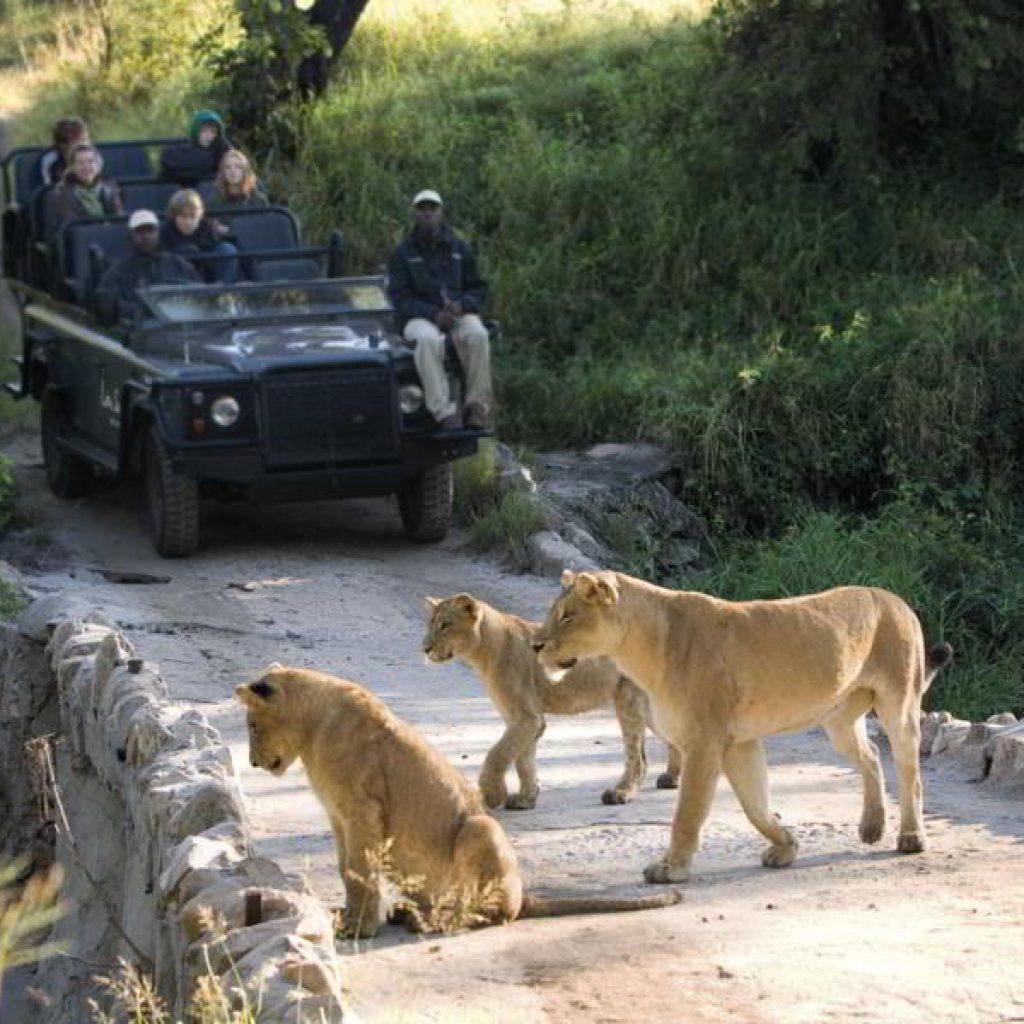 Malaria Free Family Safari and Cape Town
Malaria Free Family Safari and Cape Town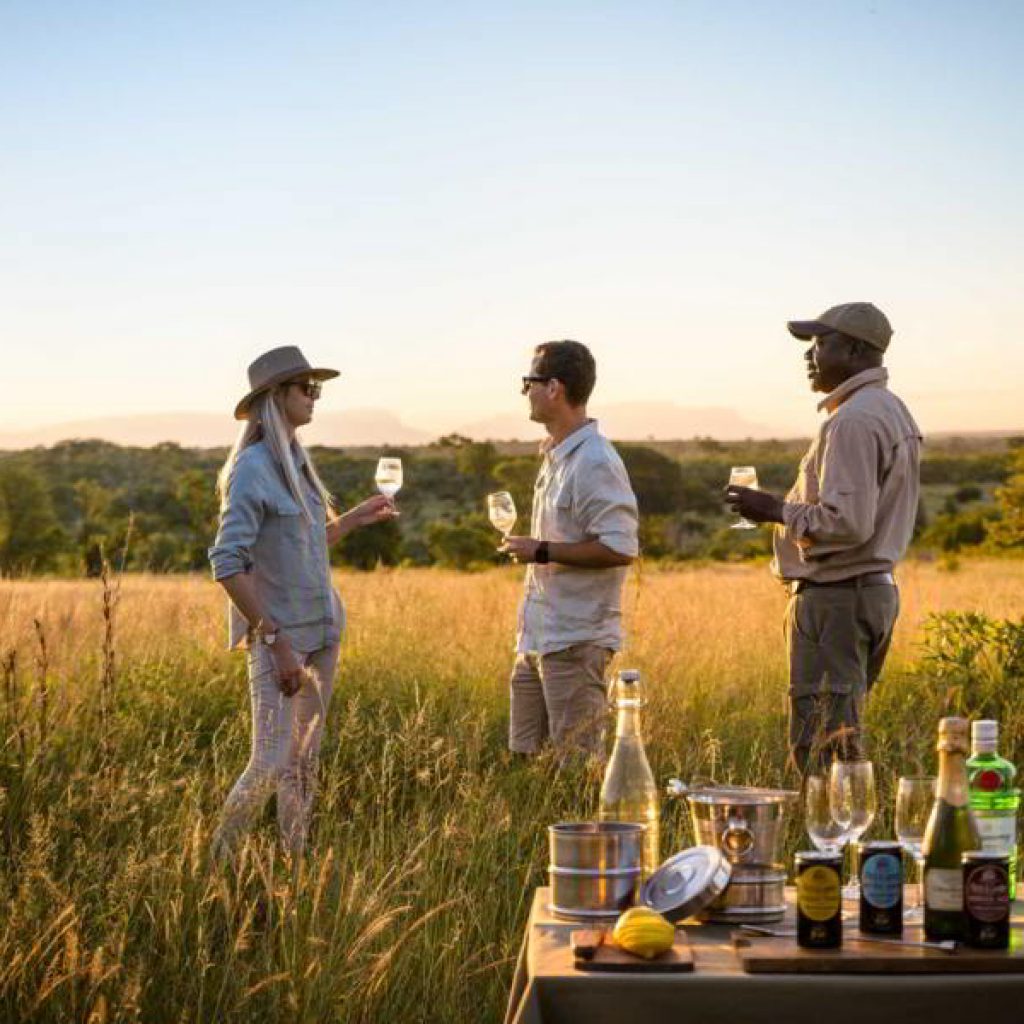 Romantic South Africa
Romantic South Africa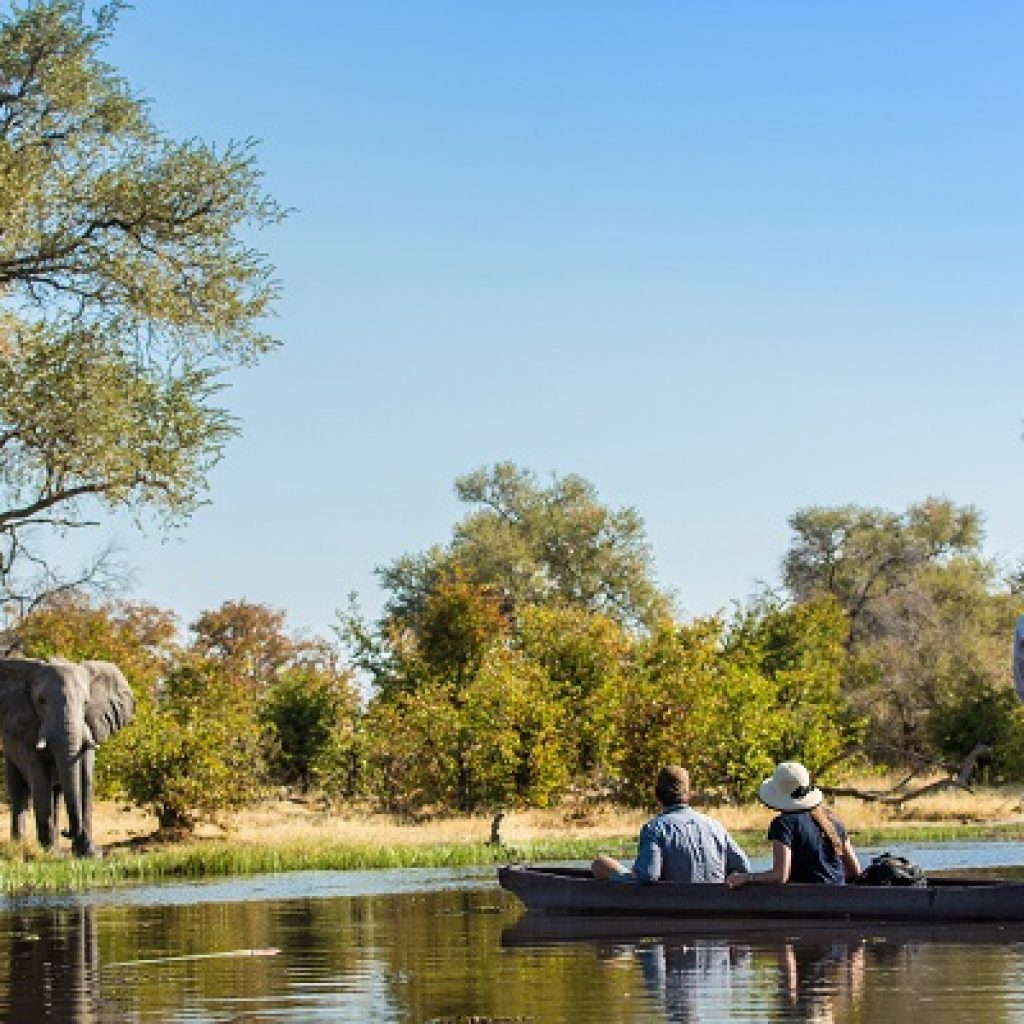 Best of Botswana
Best of Botswana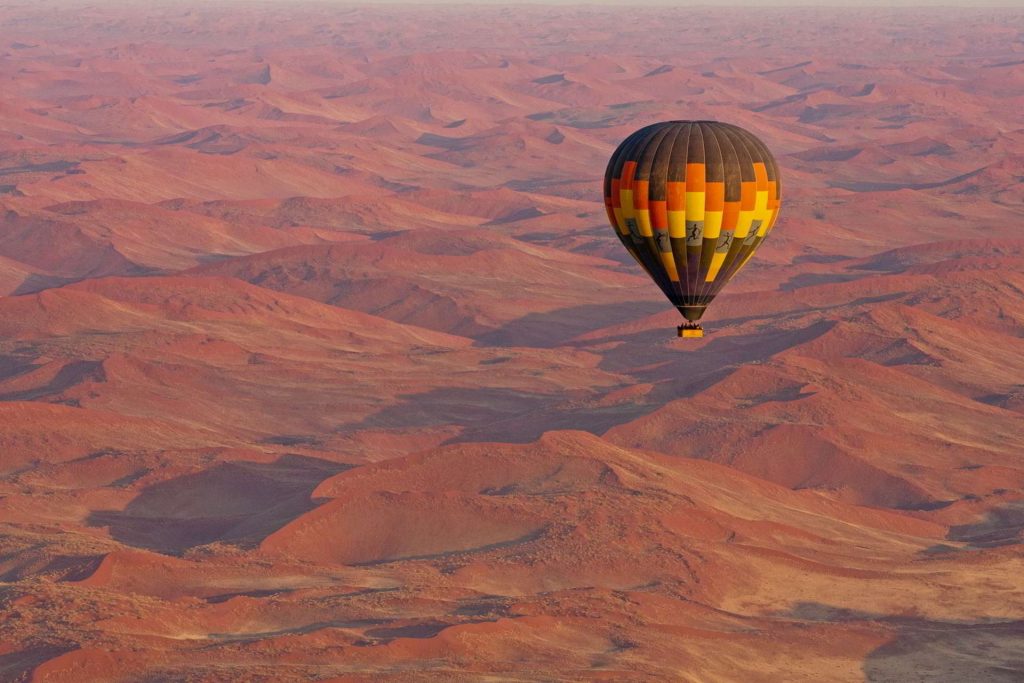 Best of Namibia
Best of Namibia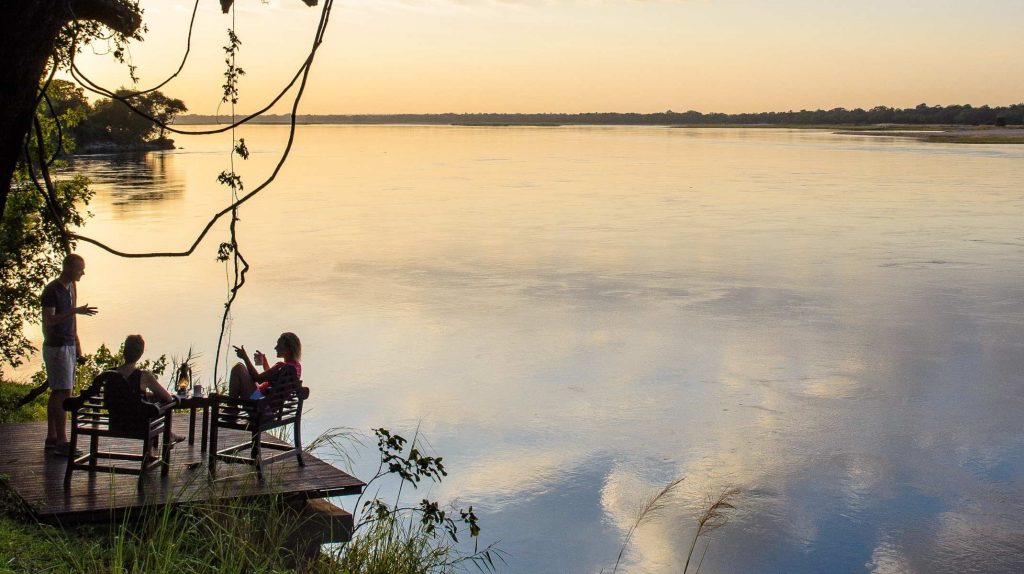 Best of Zambia
Best of Zambia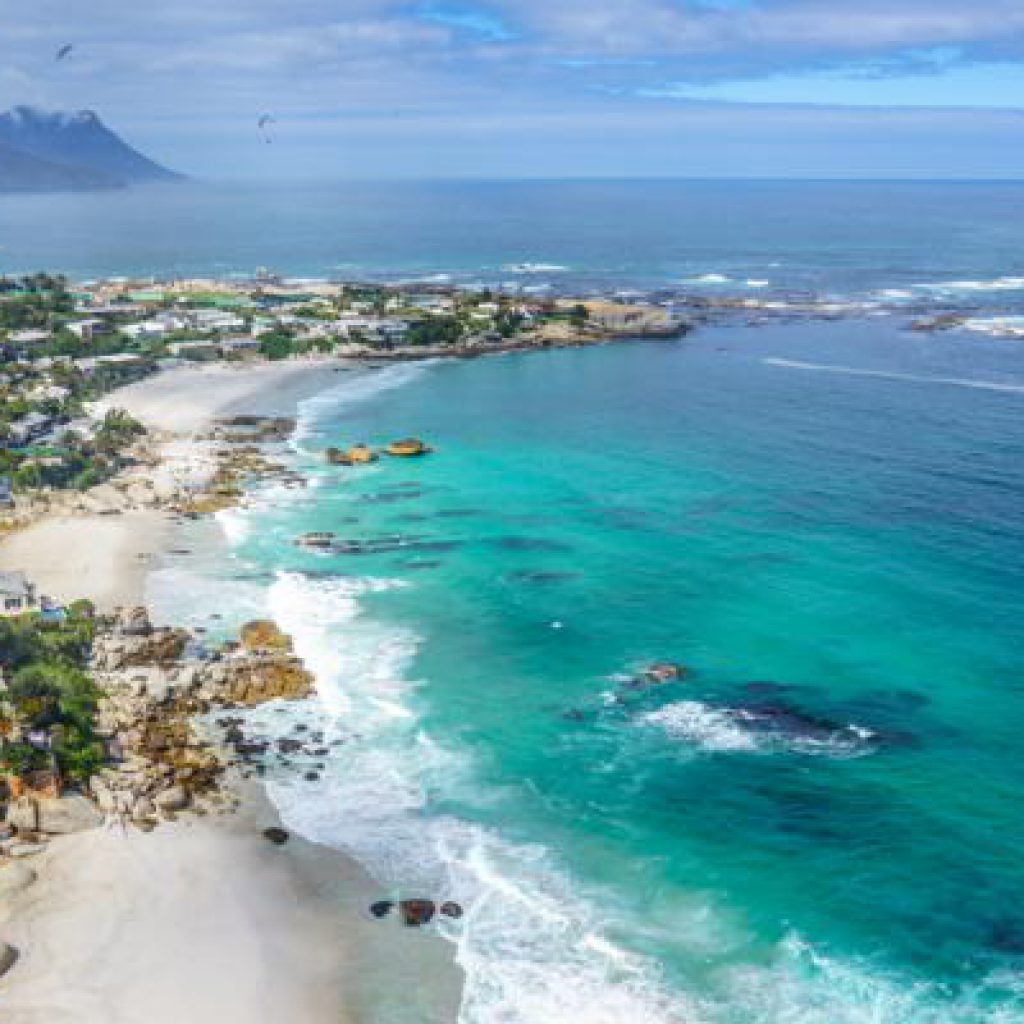 Bush and Beach Duo
Bush and Beach Duo


